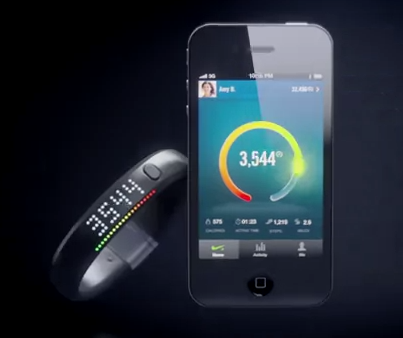SxSW standout: you are the new killer app
 In this guest post Ben Cooper reports from the South by Southwest conference on the big trend – ambient computing; what the hell is it, and how marketers and brands can benefit
In this guest post Ben Cooper reports from the South by Southwest conference on the big trend – ambient computing; what the hell is it, and how marketers and brands can benefit In the fast-growing category of personal fitness, claiming to “tell you more about yourself than you ever knew before”, the Nike+ Fuelband measures activity and duration and allows you to share it with your social networks (although the Nike branded metric of activity is questionable). It’s essentially helping people become more active by recognising their behaviours, empowering them to take charge and reach personal goals. As part of SxSW, Nike opened the Fuelband’s application programming interface (API) to allow developers to integrate features into their apps or platforms. Essentially extending the service and its possibilities.
In the fast-growing category of personal fitness, claiming to “tell you more about yourself than you ever knew before”, the Nike+ Fuelband measures activity and duration and allows you to share it with your social networks (although the Nike branded metric of activity is questionable). It’s essentially helping people become more active by recognising their behaviours, empowering them to take charge and reach personal goals. As part of SxSW, Nike opened the Fuelband’s application programming interface (API) to allow developers to integrate features into their apps or platforms. Essentially extending the service and its possibilities.
Holding a mirror up to the user via their personal analytics is going to empower people no end. Coupled with technologies such as GPS, accelerometers and the information that surrounds us, digital can step up and be accountable and useful in our daily lives.
Amber Case, Cyborg Anthropologist and founder of Geoloqi, said: “The best technology is invisible and gets out of people’s way to let them live their lives.” In her keynote address entitled “Ambient Location and the Future of the Interface” she showed devices that buzz when you’re going north, in doing so make the user better at locating themselves. Digital reminder notes that can be left where they’re most relevant.
One of the most hyped apps at SxSW was Highlight, as Kim McKay pointed out in her piece yesterday. The Highlight mobile app allows users to discover people around them with similar interests or people in common. But it suffers from the challenges we face now, such as limited battery life and a solid network connection. it’s been cited as one to watch, but in truth join a host of similar services that start to work in the background rather than require us to fire up an app and request the service.
It’s clear that “always on” will become the norm in the next year or two.
So as a marketer you’ve probably got a desire to build an app, or your agency keeps pitching app ideas. The question – as ever with digital – is how can you add value for the user? But in this instance, with personal data, brands have the opportunity to add a layer that truly connects. Connecting information, from the user and the brand, to create new experiences and services that change lives.
With this rise of ambient computing and transparent personal data, think how you can add to your consumers’ actual daily activity. Not only contextually relevant but actually useful, in the right place at the right time, and most importantly benefiting your user when they need you most.
Ben Cooper is Digital Director at The Monkeys




And so we all get dumber… and dumer… an duma….
User ID not verified.
Peter, really? I felt it would allow us to get smarter. We’d waste less time visiting these services and just get on with living.
User ID not verified.
Fantastic as always Ben, thanks for the insight.
User ID not verified.
mate, GREAT article. loved it. thank you.
User ID not verified.
Really fires up the imagination – nice piece Ben. To me, – and admittedly, I’m taking this to the extreme – it conjures up images of a society like the Eloi from H.G Wells’ Time Machine.
User ID not verified.
Makes me think of Wall-e – so much truth in that movie…
User ID not verified.
Great post Ben. A lot of these principles were hyped when WAP arrived on mobile. Now I think the tech has caught up with the thinking.
User ID not verified.
Just don’t use a fitness app on Apple’s network or anything that syncs with Facebook.
Unless you like the idea of your fitness data being sold to your health insurer.
User ID not verified.
And there is the option to be “always off” . . if you fancy it
User ID not verified.
Sounds like we are moving towards an ‘always on’ content delivery model which now algorithmically matches content to your ‘lifestyle’/’the way you live your life, and your interactions’.
User ID not verified.
only one problem with this fabulous Brave New World
eventually people will realise the negatives associated having no privacy and will shun these tech/consumption/marketing led ideas
User ID not verified.